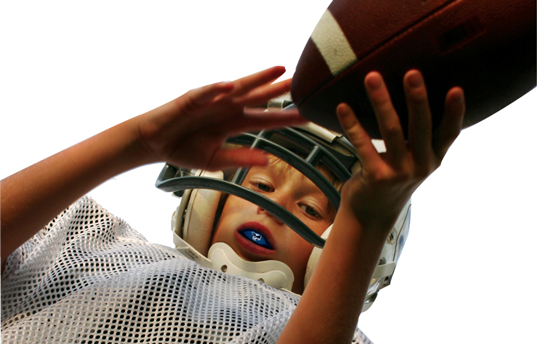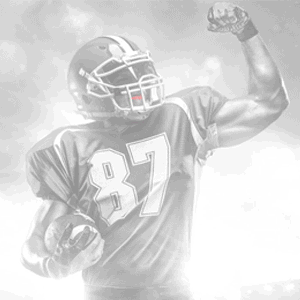National Facial Protection Month: 3 Tips To Help Protect Your Face

It’s April, National Facial Protection Month, and that means its time to help build awareness for safety in sports!
As we’ve stated in this space many times, athletes have a 33-56% chance of receiving an orofacial injury — an injury to the mouth or face — during their playing career. And consider this: a broken or damaged tooth doesn’t heal like a bone meaning lifelong maintenance, appointments and surgeries with a lifetime cost of approximately $20,000 — to replace just one tooth!
That’s why the American Dental Association, the Academy for Sports Dentistry and the National Athletic Trainers’ Association, among others, recommend a professionally-made, properly-fitted custom mouthguard for all contact and collision sports.
What exactly does that mean? Here are three tips to celebrate National Facial Protection Month:
1. Material Matters
It’s not just a clever name: mouthguards guard mouths. But not all mouthguards are created the same.
Proper protection starts with a minimum of 4 mm of material in the important impact zones — the areas in front of your teeth and under your molars — and means there isn’t bulky material where protection isn’t needed. However, these zones change from sport to sport.
For contact sports like football and ice hockey, frontal impact is guarded by the facemask or shield, so mouthguards may have a thinner frontal profile, but feature more protection under the molars. For combat sports like MMA or boxing that take deliberate and frequent impacts to the mouth and face, mouthguards may need a more protective frontal profile.
2. Perfect Fit
In order to get the most protection out of a mouthguard, it simply needs to be worn properly; and that all starts with the fit.
Everyone’s mouth is different, so it’s important that mouthguards have a tight enough fit to firmly stay on the upper teeth without being held in place with the lower jaw. That means no biting or clenching!
When a mouthguard fits snuggly, it stays in place during any impact and won’t become dislodged. It should never be able to come loose and float around the mouth, ensuring that its right where it needs to be when impact occurs.
3. Breathe Easy
Mouthguards shouldn’t interfere with speech or breathing, so when players can’t speak or breathe clearly, their mouthguards don’t fit correctly. And that means it is uncomfortable.
The material of a mouthguard should be limited or removed entirely from the free flow space in the mouth — the area behind the back of your front teeth and on the inside of your molars. This allows you to speak, breathe and even drink without removing your guard.
When a mouthguard has the right amount of material, fits properly and is comfortable, athletes are protected on the field, pitch, court or ice. Help raise awareness this National Facial Protection Month by celebrating in style. Click the link below to learn more.
Celebrate Awareness Month In Style




 It’s April, National Facial Protection Month, and that means its time to help build awareness for safety in sports!
It’s April, National Facial Protection Month, and that means its time to help build awareness for safety in sports!

